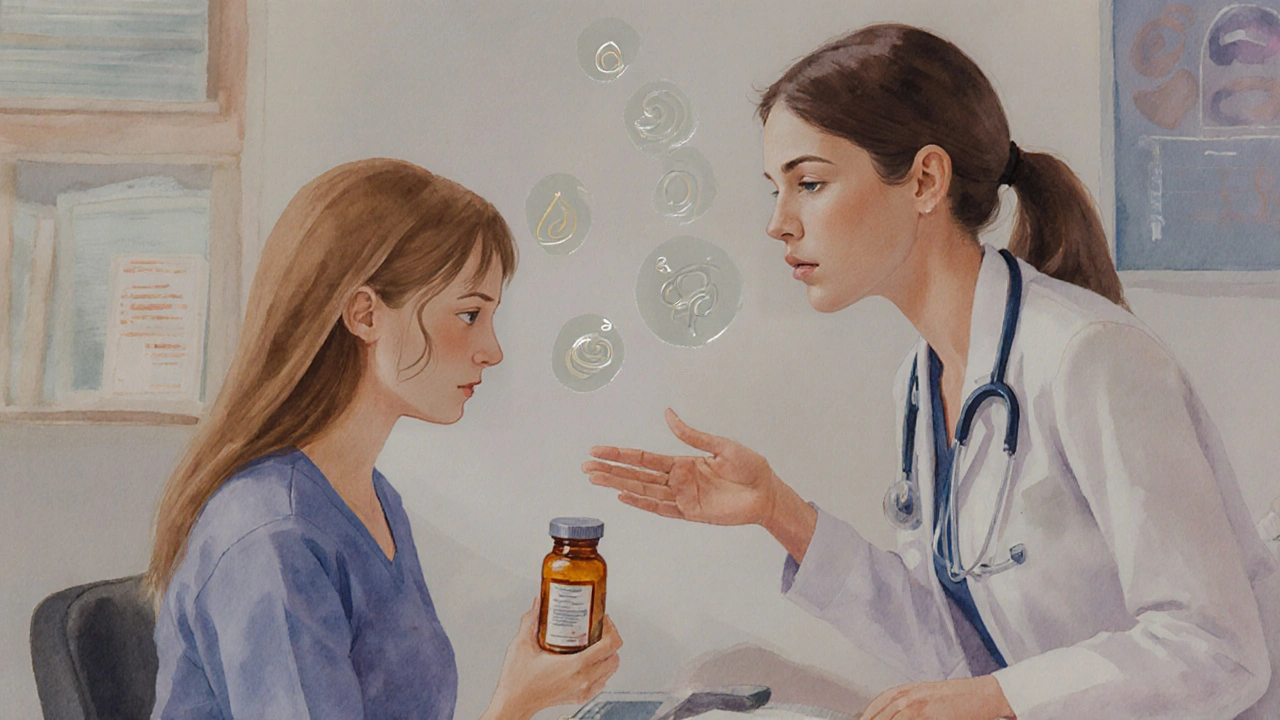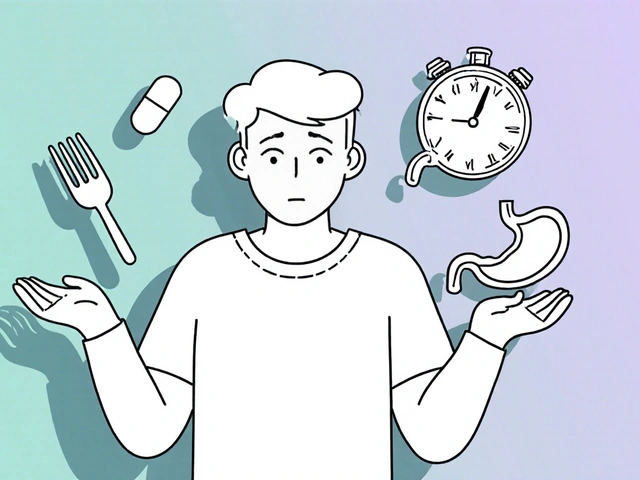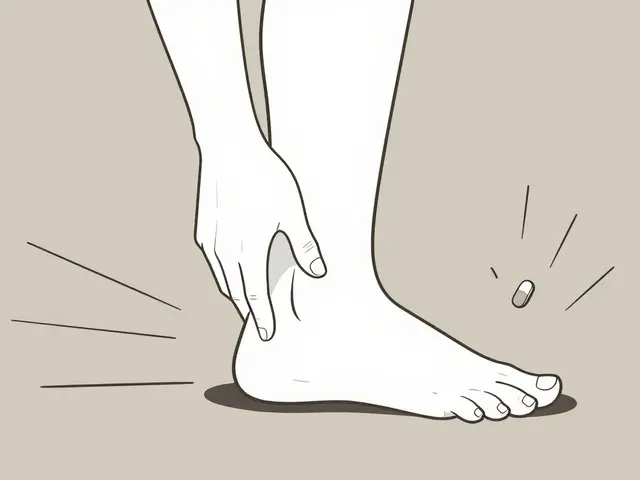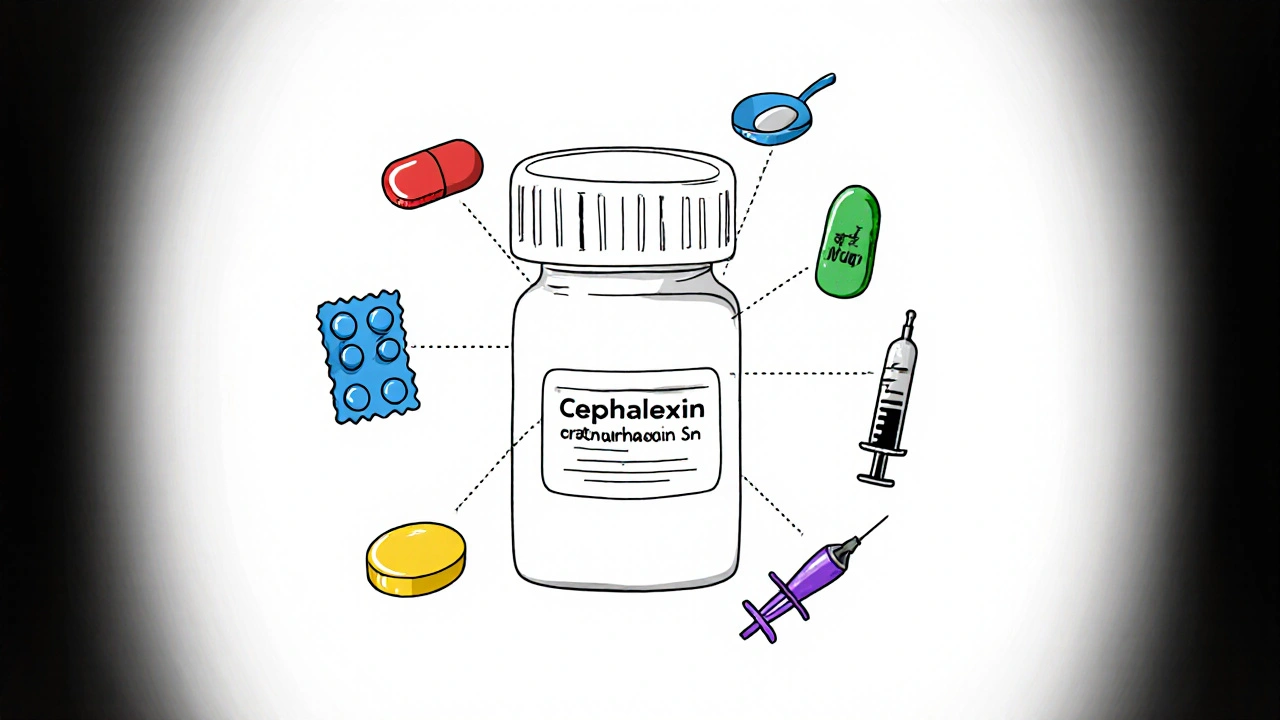Trihexyphenidyl Side Effect Risk Checker
Check your risk level for Trihexyphenidyl side effects based on your medical history and current symptoms.
Quick Take
- Trihexyphenidyl is an anticholinergic used mainly for Parkinson’s disease.
- Dry mouth, blurred vision, and urinary retention are the most common complaints.
- Older adults and people with pre‑existing bladder problems are at higher risk.
- Most side effects ease after a few weeks or with dose adjustments.
- Seek medical help immediately if you develop confusion, fast heart rate, or severe constipation.
When you pick up a prescription for Trihexyphenidyl is a muscarinic‑receptor blocker that helps smooth out the tremors and stiffness of Parkinson’s disease, you’re probably looking for relief from those “off‑times.” The drug, sold under the brand name Artane and known generically as an anticholinergic medication, can be a real game‑changer-when it works without causing a cascade of unwanted symptoms.
But like any medication that meddles with the nervous system, it brings a set of side effects that can range from mildly annoying to potentially dangerous. Below we break down what to expect, why it happens, and how you can stay one step ahead.
How Trihexyphenidyl Works
Trihexyphenidyl blocks the action of acetylcholine at muscarinic receptors in the brain. In Parkinson’s disease, dopamine levels are low while acetylcholine remains relatively high, creating an imbalance that fuels tremor and rigidity. By dampening acetylcholine, the drug restores a better balance, easing motor symptoms.
The same mechanism, however, also touches other parts of the body that rely on muscarinic signaling-like the eyes, salivary glands, bladder, and gut. That’s why the side‑effect profile looks the way it does.
Common Side Effects (What You’ll See First)
| Side effect | Typical frequency | Why it happens |
|---|---|---|
| Dry mouth | 30‑60% | Reduced saliva secretion from blocked muscarinic receptors in salivary glands |
| Blurred vision | 20‑40% | Pupil dilation (mydriasis) limits the eye’s ability to focus |
| Urinary retention | 10‑25% | Relaxation of bladder detrusor muscle makes emptying harder |
| Constipation | 15‑30% | Slowed intestinal motility due to anticholinergic action |
| Dizziness or light‑headedness | 10‑20% | Changes in blood pressure regulation |
These five symptoms account for the bulk of patient complaints. In most cases they pop up within the first two weeks and tend to mellow as your body adjusts. Drinking plenty of water, chewing sugar‑free gum, and using over‑the‑counter lubricating eye drops can help keep the irritation down.
Less Common but Serious Effects
When you hear the phrase "serious side effects," think about anything that could require a hospital stay or an urgent change in therapy.
- Cognitive impairment or confusion - Reported in up to 5% of older adults; the drug can cross the blood‑brain barrier and muddy thinking.
- Rapid heart rate (tachycardia) - A sign that the anticholinergic load is too high for the cardiovascular system.
- Severe constipation leading to bowel obstruction - Though rare, it can be life‑threatening if not addressed quickly.
- Allergic skin reactions - Rash, itching, or hives may appear in sensitive individuals.
If any of these arise, stop the medication and contact a healthcare professional right away. The risks often outweigh the benefits, especially for people over 70.

Who’s Most at Risk?
Age is the biggest predictor. People over 65 already have reduced cholinergic activity, so adding an anticholinergic can tip the balance into confusion or falls. Kidney or liver impairment also slows drug clearance, raising blood levels.
Other red flags include:
- History of glaucoma - Dilated pupils can worsen intra‑ocular pressure.
- Pre‑existing urinary problems - Prostate enlargement or overactive bladder makes retention more likely.
- Use of other anticholinergic drugs - Combining them can cause a cumulative effect.
- Cardiac arrhythmias - The medication can increase heart rate.
Managing the Side Effects
Most clinicians start with a low dose (often 0.5mg at night) and increase slowly. If you notice Trihexyphenidyl side effects creeping in, try these practical steps before calling the doctor:
- Adjust timing - Taking the dose before bed can mask daytime drowsiness and dry mouth.
- Stay hydrated - Sip water throughout the day; it helps with dry mouth and constipation.
- Use saliva substitutes - Sugar‑free lozenges or prescription mouthwashes give quick relief.
- Eye care - Over‑the‑counter lubricating drops and sunglasses reduce glare from blurred vision.
- Bladder tricks - Schedule bathroom breaks every 3‑4hours and avoid caffeine.
If side effects persist despite these tweaks, your doctor may switch you to a different class of Parkinson’s medication (like a dopamine agonist) or add a medication to counteract the problem, such as a peripheral anticholinergic antagonist for severe dry mouth.
When to Call the Doctor
Never ignore warning signs. Call your prescriber or go to urgent care if you experience any of the following:
- New or worsening confusion, memory gaps, or hallucinations.
- Chest pain, rapid heartbeat, or shortness of breath.
- Unable to empty your bladder after trying for 30minutes.
- Severe constipation that doesn’t improve with laxatives.
- Sudden vision loss or severe eye pain.
Early intervention can prevent complications and keep you on the right therapeutic track.
Frequently Asked Questions
Can I take Trihexyphenidyl with other Parkinson’s drugs?
Yes, it’s often added to levodopa or dopamine agonists to control tremor, but the total anticholinergic load should stay low to avoid cognitive issues.
How long does it take for side effects to disappear after stopping the drug?
Most mild symptoms fade within 2‑3days as the drug clears; more persistent effects like constipation may need a few weeks of supportive care.
Is dry mouth dangerous?
It’s uncomfortable and can increase tooth decay risk, but it’s not life‑threatening. Good oral hygiene and saliva substitutes keep it manageable.
Can I drink alcohol while on Trihexyphenidyl?
Alcohol can intensify drowsiness and dizziness, so it’s best to limit intake and discuss any plans with your doctor.
What alternatives exist for someone who can’t tolerate this drug?
Options include newer anticholinergic‑sparing agents like rasagiline, seed‑side dopaminergic therapies, or non‑pharmacologic approaches such as deep brain stimulation.
Next Steps
Start by tracking any new symptoms in a simple notebook - note the time of day, severity, and what you were doing. Bring this record to your next appointment; it gives the clinician concrete data to adjust your dose or switch meds.
If you’re just beginning Trihexyphenidyl, give yourself a two‑week window to settle in. Most people find the benefits outweigh the mild inconveniences, but staying proactive keeps you safe and comfortable.





Comments
2 Comments
Lisa Lower
Trihexyphenidyl can feel like a double‑edged sword for many patients. The anticholinergic action helps smooth tremor but it can also dry your mouth quickly. Start with the lowest possible dose and watch how your bladder responds. Hydration and sugar‑free gum are simple tricks that many forget. If you notice blurry vision after a few days talk to your doctor about adjusting the schedule. Remember that side effects often lessen after the first two weeks. Stay proactive and keep a symptom diary each day.
Justin Park
Reading through the side‑effect profile feels a bit like exploring a philosophical maze 🧠-you’re constantly balancing benefit against burden. One could argue that the very mechanism that eases rigidity also invites blurred vision, a classic trade‑off. Yet the lived experience of patients reminds us that numbers alone don’t capture the full story. It’s worth pondering how much cognitive fog we’re willing to accept for smoother movement. The article does a solid job laying out the basics, but a deeper dive into receptor pharmacodynamics would satisfy the inquisitive mind. Overall, keep an eye on both motor and non‑motor symptoms as you navigate treatment. 🌟
Write a comment